

WEEK 48: NOVEMBER 22-28
TOPIC: CLOSE ASTEROIDAL ENCOUNTERS
In the Week 2 “Special Topics” presentation I discussed the history and recognition of near-Earth asteroids, and described some of the early observed encounters by these objects. What could perhaps be considered the most remarkable of these asteroids was a 10th-magnitude fast-moving object discovered on October 28, 1937 by Karl Reinmuth at Heidelberg Observatory in Germany. Two days later Reinmuth’s object passed just 0.0050 AU (1.9 lunar distances) from Earth, by far the closest known approach of an asteroid to Earth at that time. Unfortunately, only four days of observations – some of these being images from pre-discovery photographs taken elsewhere up to three days earlier – were available, which was not enough from which to calculate a valid orbit, and thus Reinmuth’s object was lost. He nevertheless named it Hermes, after the fleet-footed messenger of the gods in Greek mythology, and this name was accepted by the general astronomical community.
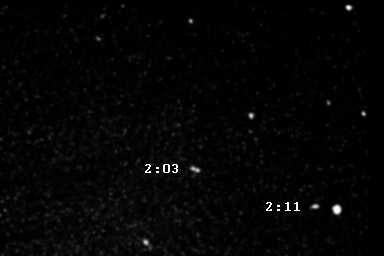
It was around this time that the first of the CCD-based survey programs, Spacewatch (based at Kitt Peak National Observatory in Arizona), was starting to become operational. While Spacewatch is not as comprehensive in its sky coverage as the later surveys have been, what regions of the sky it did survey it did so very “deeply,” i.e., to very faint magnitudes. It accordingly began finding tiny asteroids passing very close to Earth, including 1991 BA (0.0011 AU, or 0.43 lunar distances) on January 18, 1991; 1993 KA2 (0.0010 AU, or 0.39 lunar distances) on May 20, 1993; and 1994 XM1 (0.0007 AU, or 0.27 lunar distances) on December 9, 1994. Each of these asteroids was no more than 5 to 10 meters in diameter.
It has become clear with the advent of the comprehensive survey programs that asteroid encounters such as these are just the “tip” of the proverbial “iceberg.” Tiny objects such as these passing very close to Earth are nowadays routinely discovered on a continuous basis, and for example already this month two asteroids with a “miss distance” less than one lunar distance have been discovered. The closest approaches have been 2008 TC3 and the three other objects discussed in that object’s “Special Topics” presentation, all of which entered Earth’s atmosphere and disintegrated and two of which left retrievable meteorite fragments, but several others have come almost as close; the closest such approach took place less than two weeks ago, when on November 13, 2020 the tiny asteroid 2020 VT4 passed just 380 km above Earth's surface fifteen hours before its discovery by the ATLAS survey in Hawaii. The IAU’s Minor Planet Center maintains a continuously-updating list of recently-discovered (and other) asteroids that have either made very close approaches in the recent past or will do so within the near-term future.
The vast majority of these close-approaching objects are one-time tiny visitors that travel on back into interplanetary space, and that pose no significant threat to Earth if they do happen to come back. However, the primary rationale for the various survey programs is to find potentially threatening objects – which are larger – with enough lead time to predict future approaches and to take appropriate actions if those become necessary. The processes by which this is done are described in a previous “Special Topics” presentation.
Because of the discoveries that have already been made, predicted close approaches to Earth by already-known asteroids take place all the time. Throughout any given year a few of these usually become bright enough to detect visually with small- to moderate-size telescopes, and throughout “Ice and Stone 2020” I have indicated such events in the weekly “This Week in History” write-ups. One such event takes place this week: the Apollo-type asteroid (7753) 1988 XB (discovered in December 1988 by a Japanese amateur astronomer, Yoshiaki Oshima, and with an orbital period of just under 1.8 years), which will pass 0.066 AU from Earth on this Sunday, November 22. It is approaching Earth from the sunward side and will be best visible next week when it is visible in the morning sky and near 15th magnitude.
At this time, the closest predicted approach by a previously-discovered asteroid took place on February 15, 2013, when the small asteroid now known as (367943) Duende – which had been discovered a year earlier by the La Sagra Sky Survey, based in southern Spain and operated by a group of Spanish amateur astronomers – passed just 0.00028 AU (0.11 lunar distances) from Earth; this was just 27,700 km above the earth’s surface and within the orbital distance of geosynchronous satellites. The flyby was best viewed from the eastern hemisphere where the asteroid became as bright as 7th or 8th magnitude, and meanwhile the Earth’s gravitational influences perturbed Duende’s orbit such that it went from being an Apollo-type asteroid to an Atira-type asteroid. By a most remarkable coincidence, the meteor explosion over Chelyabinsk, Russia – discussed in a previous “Special Topics” presentation – took place that very same day, but there is no relation between the two events.
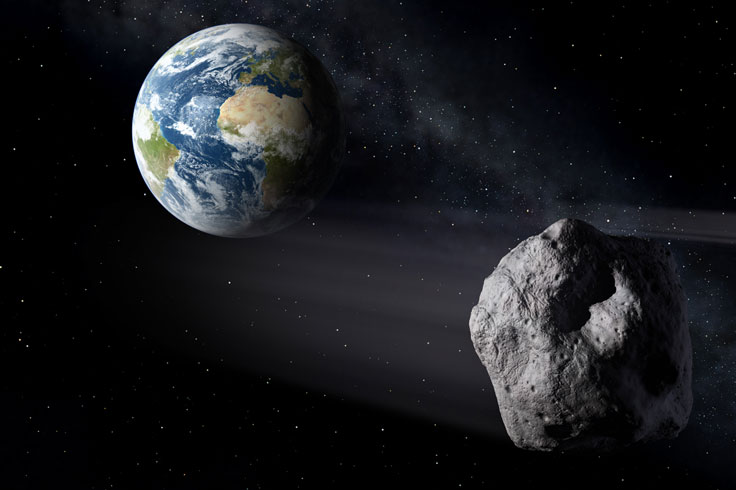
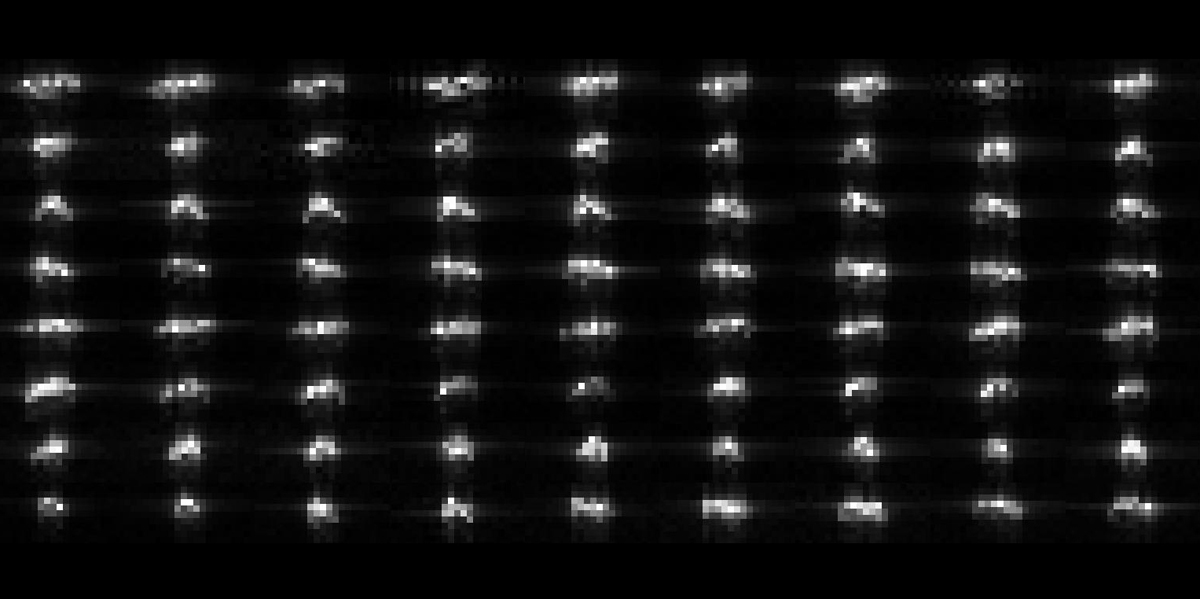 LEFT: Artist’s conception of an asteroid passing by Earth. Courtesy NASA/JPL-CalTech. RIGHT: A series of radar images of (367943) Duende during its close approach to Earth on February 15, 2013, obtained with NASA’s Deep Space Network tracking antenna at Goldstone, California. Courtesy NASA.
LEFT: Artist’s conception of an asteroid passing by Earth. Courtesy NASA/JPL-CalTech. RIGHT: A series of radar images of (367943) Duende during its close approach to Earth on February 15, 2013, obtained with NASA’s Deep Space Network tracking antenna at Goldstone, California. Courtesy NASA.
One group of asteroids that is especially interesting in the overall discussion of Earth encounters are the “Potentially Hazardous Asteroids,” or PHAs, defined as having an absolute magnitude of 22 – corresponding to an approximate diameter of 100 to 200 meters – or brighter, and having a minimum approach distance to Earth’s orbit of 0.05 AU or smaller. (An asteroid’s absolute magnitude is defined as the apparent magnitude it would have if located 1.0 AU from the sun and Earth at a phase angle of 0 degrees – an impossible physical configuration, but calculable mathematically.) For obvious reasons, these are the objects most likely to impact Earth at some point in the future, and are most likely to present a threat if they were to do so – thus, they are the asteroids that most warrant keeping a close watch on. (Comets that fit these criteria can also be considered as “potentially hazardous objects.”) As of now, slightly over 2100 PHAs have been identified. Duende, incidentally, is not among this group; with an absolute magnitude of 24 – corresponding to a size in the neighborhood of 50 meters – it is not large enough to be considered a global threat, although it could wreak damage over a local scale were it to strike Earth at some point.

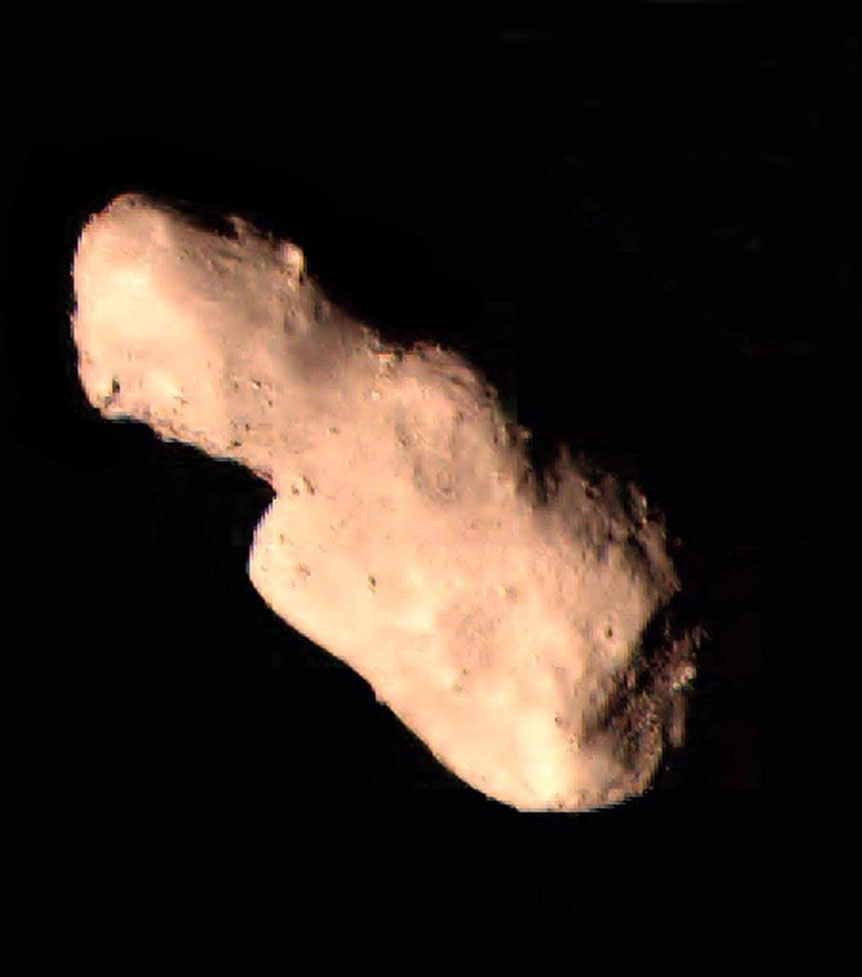 The Potentially Hazardous Asteroid (4179) Toutatis, which has made several close approaches to Earth since its discovery in 1989. Left: A series of “stacked” CCD images I took on September 22, 2004, when it was located 0.048 AU from Earth. Right: Close-up image taken by China’s Chang’e 2 spacecraft during its flyby of Toutatis on December 13, 2012. Courtesy China National Space Administration.
The Potentially Hazardous Asteroid (4179) Toutatis, which has made several close approaches to Earth since its discovery in 1989. Left: A series of “stacked” CCD images I took on September 22, 2004, when it was located 0.048 AU from Earth. Right: Close-up image taken by China’s Chang’e 2 spacecraft during its flyby of Toutatis on December 13, 2012. Courtesy China National Space Administration.
The following table gives the predicted close approaches of known PHAs to within 0.02 AU of Earth over the remainder of this decade, i.e., through the end of 2029 (extracted from the list maintained by the Minor Planet Center):
| Asteroid | Approach Date | Distance (AU) |
|---|---|---|
| 1999 RM45 | 2021 March 2 | 0.0196 |
| (231937) 2001 FO32 | 2021 March 21 | 0.0135 |
| 2008 MP1 | 2021 July 8 | 0.0106 |
| (7482) 1994 PC1 | 2022 January 18 | 0.0132 |
| 2014 HK129 | 2022 December 20 | 0.0172 |
| 2010 XC15 | 2022 December 27 | 0.0052 |
| 2006 HV5 | 2023 April 26 | 0.0162 |
| 2011 GA | 2023 October 15 | 0.0174 |
| 1998 HH49 | 2023 October 17 | 0.0079 |
| 2008 OS7 | 2024 February 2 | 0.0191 |
| 2011 HJ7 | 2025 May 12 | 0.0168 |
| 2009 FF | 2025 September 11 | 0.0175 |
| (152637) 1997 NC1 | 2026 June 27 | 0.0172 |
| (137108) 1999 AN10 | 2027 August 7 | 0.0027 |
| (153814) 2001 WN5 | 2028 June 26 | 0.0017 |
| 2011 LJ19 | 2028 July 27 | 0.0127 |
| (440212) 2004 OB | 2028 September 30 | 0.0150 |
| (35396) 1997 XF11 | 2028 October 26 | 0.0062 |
| (99942) Apophis | 2029 April 13 | 0.0003 |
| (418416) 2008 LV16 | 2029 November 24 | 0.0188 |
The next-to-last entry on this list is the famous approach by (99942) Apophis that is discussed in detail in a previous “Special Topics” presentation; it will pass 31,000 km above Earth’s surface, within the orbit of geosynchronous satellites. The encounter will best be seen from the eastern hemisphere, from where it should become as bright as 3rd magnitude as it transits across the nighttime sky. As discussed in that same “Special Topics” presentation, the approach of (35396) 1997 XF11 in October 2028 was originally calculated to be much closer, and the overall story of how those predictions evolved played a significant role in the process by which predictions are made today.
At least one near-Earth “asteroid” is of artificial origin: this is Elon Musk’s Tesla Roadster, which was included as a payload for the test launch of Space Exploration Technologies’ (SpaceX) Falcon Heavy rocket from the Kennedy Space Center at Cape Canaveral, Florida on February 6, 2018. The
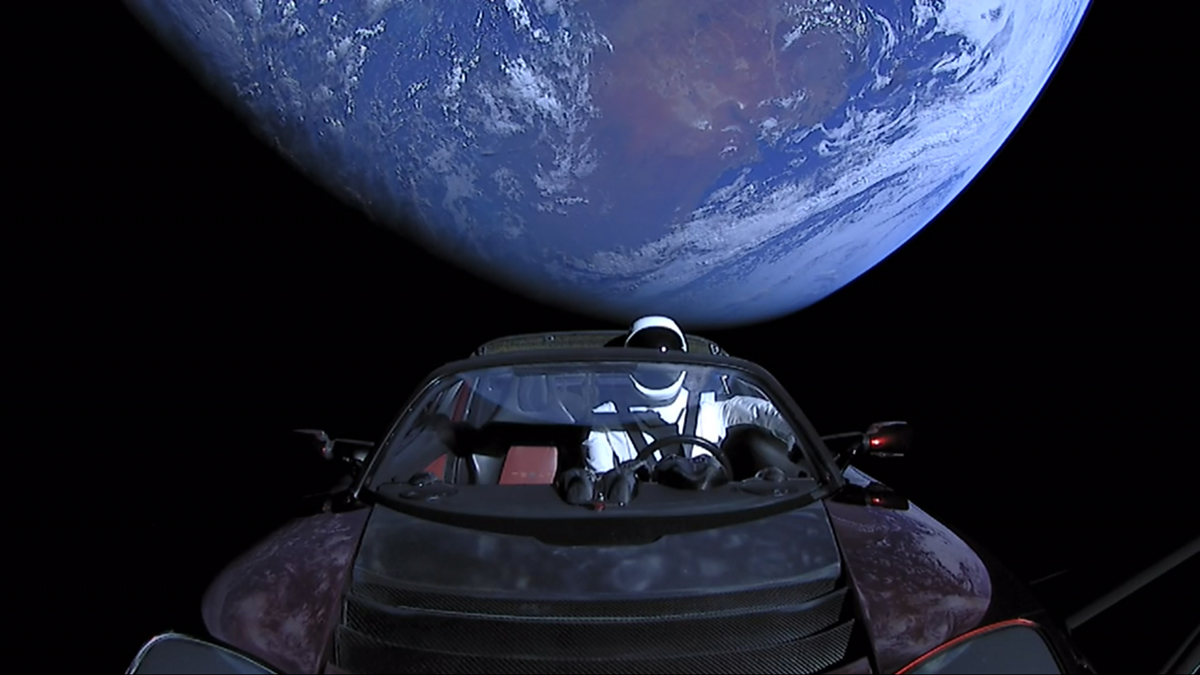
Tesla Roadster was placed in an Apollo-type orbit with an orbital period of 1.52 years and an eccentricity of 0.26, and despite its origins from Earth it does not approach Earth again until January 11, 2047, at which time it will pass by at a distance of 0.032 AU.

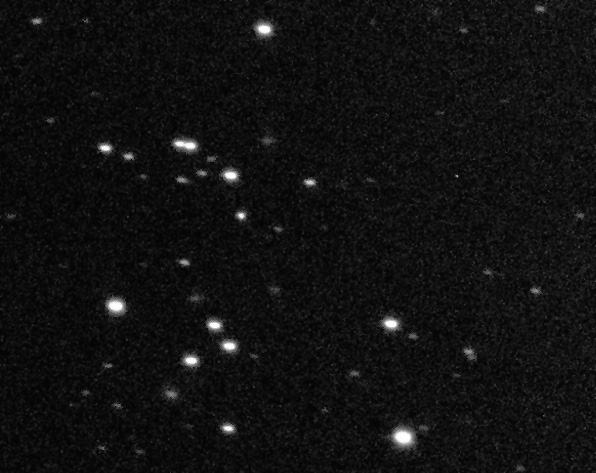 Two images of Elon Musk’s Tesla Roadster taken ten minutes apart on February 9, 2018 by Tim Lister with the Las Cumbres Observatory’s facility at Cerro Tololo Inter-American Observatory in Chile. The identity of the Tesla (a moving “star”) is left as an exercise for the reader.
Two images of Elon Musk’s Tesla Roadster taken ten minutes apart on February 9, 2018 by Tim Lister with the Las Cumbres Observatory’s facility at Cerro Tololo Inter-American Observatory in Chile. The identity of the Tesla (a moving “star”) is left as an exercise for the reader.
Earth is certainly not the only planet that experiences close encounters by asteroids, and as discussed in several previous “Ice and Stone 2020” presentations we have seen the results of recent impacts into Jupiter as well as the evidence of impact craters, including very recent ones, on the moon and on Mars. Many asteroids make close passages by other planets as well as Earth: for example, by the end of the 21st Century Hermes will come to within 0.1 AU of Venus four times and Mars once, and also within 0.02 AU of the main-belt asteroid (4) Vesta on one occasion. The closest Mars-approaching asteroid that we’ve seen is 2007 WD5, discovered by the Catalina Sky Survey in Arizona, that – according to the best available orbit – passed just 0.00015 AU (19,000 km, or 6.5 Mars radii) above the Martian surface on January 30, 2008. If there should come a point in the future when there are human colonies on Mars, or other worlds of the solar system, among their many other concerns they will still have to deal with the potential threat of impacting objects from space.
“Special Topics” archive
Ice and Stone 2020 home page
Earthrise Institute home page